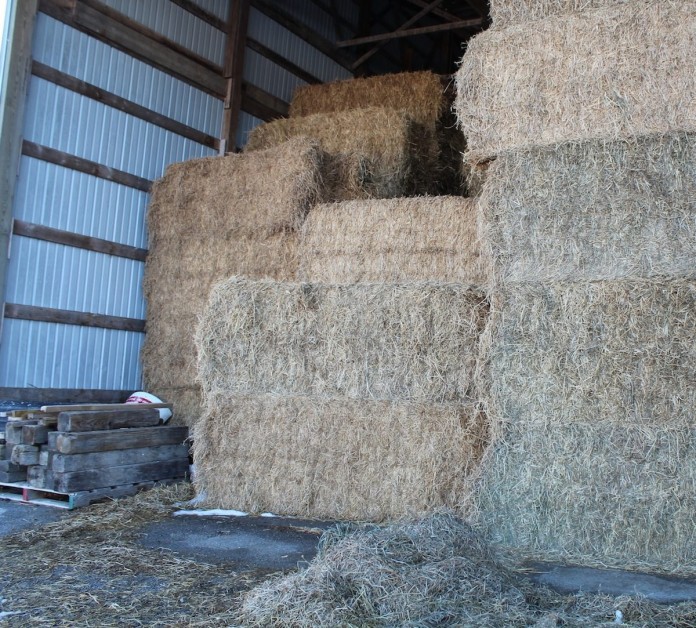WOOSTER, Ohio — Unused farm buildings can add to the cost of your property taxes and your maintenance expenses, but with a little work and some creativity, you can turn those unused buildings into a dependable stream of income.
A group of Extension specialists from across the Midwest produced a report for 2014, outlining the results of a survey that show what property owners can expect to get for various kinds of agricultural buildings, if they choose to rent those buildings.
The report, known as the Farm Building Rental Rate Survey, was compiled by the North Central Farm Management Extension Committee, and is the first of its kind for Midwestern states in many years.
View the infographic here.
Range listed
The report lists a price range and an average price for various types of ag facilities and structures.
The average rent for a dairy milking parlor and cow housing facility, for example, is $12.16 per cow per month. But the range is anywhere from $6.25-$16.67 per cow per month.
“It’s a helpful range to see what other people are renting,” said David Marrison, OSU Extension educator in Ashtabula County.
The report should be used as a reference for farmers and tenants to start a discussion, Marrison said, not to set the market.
Related: See the full survey here.
Every rent agreement is different, and the age and condition of the buildings, the age and condition of the utilities, and the responsibilities of each partner can alter the final cost of rent.
“It’s a starting point,” said OSU Ag Economist Barry Ward, who is part of the committee that conducted the survey. “Whether they be the renter or the rentee, it shouldn’t be something that they use as an end-all type of data point.”
Still, Ward and his partners tried to put together a meaningful survey that represents a solid average for the Midwest. They sent the survey to farmers and ag professionals via ag lenders, Extension newsletters and farmer meetings.
Many categories
The survey provides data for beef, dairy and swine facilities, but also for machinery storage, grain and hay storage, as well as rural housing.
In general, the survey assumes the owner would be responsible for major repairs and insurance coverage, while the cost of utilities, labor and minor upkeep would fall under the care of the tenant.
All agreements are different, however, and Marrison and Ward recommend that parties put together a written agreement. This helps keep everyone on the same page, and ensures that expectations of all parties are met.
“Any time that you’re doing some type of lease, we would recommend there would be a (written) lease,” Marrison said, and one that considers the potential for all potential damages.
Speaking of damages, Marrison said the first step is to contact the insurance agency, and make sure the proper provisions are followed to protect the structure and its contents.
Liability concerns
Matt Helsley, a Nationwide Insurance agency manager at Trent Insurance Group, of Shreve, said there’s too much at stake for both parties — to not have a contractual agreement.
Helsley, who also is a Nationwide ag specialist, said the owner of the building is typically responsible for the structure; however, even that can be amended.
The tenant may also need to consider insurance for the contents of the building — and whether any flaws with the building — such as a leaky roof — might cause damages.
Helsley recommends extending the insurance policy to all parties involved, in the event of bodily injury. He recommends a minimum of a $1 million in liability protection, in the event of an injury and potential lawsuit.
He said things shouldn’t be left to chance.
“I don’t discourage them (from renting) but I do encourage them to be educated from the liability perspective and the insurance perspective,” he said.
More interest
The number of buildings being rented in Ohio is difficult to gauge, but Marrison said he believes it’s picked up in his own county, as more farm operators seek additional space to store grain, as well as their equipment.
He said equipment naturally does better when it’s under a roof, and some empty buildings make good places to get equipment indoors and out of the elements.
“It’s a way to utilize an asset that’s sitting there,” he said.
Financial analysis
Ward said farm operators should also consider whether building or buying a facility might be less expensive in the long run.
Depending on how many years the operator intends to use a particular facility, it may make more sense to build — and get exactly what the producer wants.
Plus, there can be tax advantages to building new, and other financial incentives.
“We like to see people do a complete economic analysis of the cost of owning a structure,” Ward said.
He said the price range reflects things like the age of the building, with older buildings being worth less, and newer ones typically having better electric and lighting, gas lines, and greater efficiency.
Ward said the market is heavily dependent on demand, and although there are many vacant farm buildings — only certain ones are suitable for livestock and production agriculture.
Other factors
As livestock farms continue to consolidate and demand larger facilities, Ward said it lessens the demand for smaller barns and sheds.
However, he said people who own these types of buildings should also consider non-farm rental agreements, such as renting them for the storage of RVs and boats.
This may require some advertising, he said, but it can prove beneficial beyond just the agricultural market.
To view the survey and other documents about ag leases, including sample lease forms, visit www.aglease101.org.










